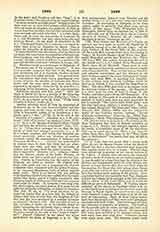

Lugos, Diocese of, in Hungary, suffragan of Fogaras and Alba Julia of the Uniat-Rumanian Rite, was erected in November, 1853, with that of Armenopolis, or Szamos-Ujvsr, out of parishes taken away from Fogaras and Grosswardein (Nagy-VSrad); it had then 90 parishes and about 47,000 faithful. Its first bishop, Msgr. Dobra, 1854-70, was also the first of all the Austro-Hungarian clergy of the Byzantine Rite to obtain the title of Doctor; in spite of countless difficulties, he contributed by his learning and holy life to bring several thousand Orthodox back to Catholicism. As his diocese had no foundation, Msgr. Dobra established the Rudolph foundation for poor students and another for aged priests or widowers. After him the diocese was administered by Msgr. John Olteanu, transferred to Grosswardein in 1873; Msgr. Victor Mihslyi, de Apsia, 1874-96, subsequently transferred to the archiepiscopal See of Fogaras, and during whose episcopacy a diocesan synod was held in November, 1882; Msgr. Demetrias Radu, 1896-1903, today occupying the See of Grosswardein; finally, Msgr. Basil Hosszu the present bishop. This very extensive diocese comprises the Counties of Krassb-Szoreny, Torontal, Temes, Hunyad, and a part of Arad; it contains about 98,000 Uniat-Rumanians, 552,000 Catholics of the Latin Rite, 1,002,000 Orthodox Rumanians, several thousand Protestants and Jews. There are 15 unmarried priests, 139 married, and 29 widowers; 163 parishes, 149 churches withresident priest, 14 without priest, 85 primary schools with an attendance of 6730. The diocese has no seminary, but twenty-two ecclesiastical students are being trained elsewhere. The city of Lugos itself has 16,000 inhabitants, 1030 Uniat-Rumanians, 7440 Latins, 4760 Orthodox Rumanians; the remainder Protestants or Jews. Situated on the right bank of the Temes, a tributary of the Danube, in Krasso-Szoreny county, it has a church built by Etienne Bathory, a Franciscan monastery, and several other objects of interest. It was the last place of resort of the Hungarian Government of 1849. Its trade is fairly important; in the suburbs are fine vineyards.
S. VAILHE

